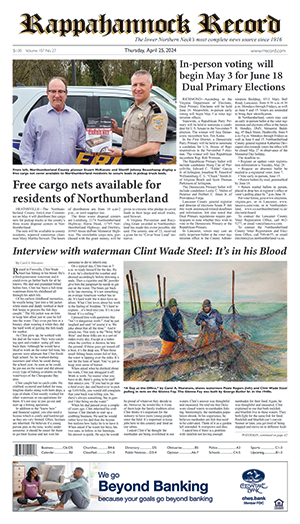by Kathy Reshetiloff,
for Bay Journal News Service

Just as we humans have to adjust to the winter, animals, too, have to cope with dropping temperatures and less available food. Survival strategies are as diverse as the wildlife of the Chesapeake Bay watershed.
We turn to puffy coats, hats, gloves and boots to keep us warm on chilly winter days; animals like deer, mice, foxes, squirrels and rabbits do much the same, only biologically, adapting to the change in temperatures by growing thicker coats. This allows them to stay active throughout the winter. They may also change when they are active or change what they eat to coincide with what is available. Beavers, meanwhile, are active throughout winter but spend most of their time in their lodges.
Other animals, like chipmunks, raccoons and skunks, survive by reducing their activity, slowing their metabolism and sleeping for longer periods. They go into go a semi-hibernating stage, sleeping for days or weeks at a time and emerging to hunt for food only on unusually warm days.
Popular myth notwithstanding, bears are not true hibernators either, but after gorging on fall foods and building up an insulating fat layer, they can sleep for weeks or even months. They too will come out on warm days to forage for acorns or hickory nuts or the like.
Groundhogs are true hibernators, making a winter burrow near trees and shrubs to provide extra protection during the cold months. They will stay in this burrow from October through February or even longer, depending on temperatures.
Bats lower their heart rates and body temperatures and spend months huddled together in a large group, called a hibernaculum, in a cave or mine.
Most frogs, turtles and snakes go further still, greatly decreasing their activity and going into a dormant physiological state called brumation, where their body temperature drops and the heart rate slows down dramatically. Many turtles, though air breathers, manage to survive the coldest months without actually breathing—though not without oxygen. They bury themselves in mud at the bottom of a pond for the winter, their skin absorbing what little oxygen they need from the water.
Wood frogs can even survive frozen solid, under leaves. They are able to do this by filling their cells with a sugary substance that acts like antifreeze. The frog’s heart actually stops and the frog is dormant all winter, until it thaws in spring.
Many insects survive harsh conditions by entering a suspended development of their life cycle known as diapause. Diapause may occur in any stage of an insect’s life cycle—egg, larva, pupa or adult—depending on the species.
One of the most obvious ways to deal with winter (one that lots of people use) is to simply leave—temporarily relocate to a warmer climate. About 340 species of birds in North America, many of them insect eaters, fly south in the winter to the temperate climes of Mexico, the Caribbean, Central America, South America. These flights vary in length, but some birds migrate hundreds to thousands of miles each year. This strategy also works for the monarch butterfly.
Birds able to switch from an insect diet to a seed diet can stay put throughout the winter. Some meat-eating birds, like hawks and owls, also remain if enough prey is available.
One feature that sets birds apart from other animals is their feathers. Birds’ bodies are covered with an outer layer of fairly stiff but flexible contour feathers and an underlayer of fluffy down feathers. The contour feathers provide protection against wind, rain and snow. The down feathers act as a layer of insulation.
Most birds also have an oil gland located at the base of their tail. Secreted oil is rubbed over the feathers with the beak or bill. Known as preening, this creates a shield that blocks wind and repels water. Birds like ducks, geese and swans can survive in water that is close to freezing because the amount of oil in their feathers makes them waterproof. Waterfowl and other waterbirds also have a subcutaneous layer of fat that keeps them warm.
Anyone who has ever gone outside on a cold, windy day without a hat knows that uncovered body parts lose heat quickly. The same is true for birds. Often, birds stand on one leg, tucking the other up among their feathers. Beaks are also tucked under their feathers. Smaller birds often drop to the ground to cover both legs with their fluffed-up bodies.
Waterfowl have fleshy feet with little blood circulation, so they are less sensitive to direct contact with the cold ground or ice. Constricting blood vessels reduces the amount of blood flow to the feet at low temperatures. Thus the core temperature of a duck or gull standing on ice may be 104 degrees F., but their feet may be just above freezing.
If winter is not your favorite season, take a cue from one of these wildlife coping strategies. Bundle up, stay warm inside, take a nap or go somewhere warmer. And keep in mind: spring is just around the corner.
Kathryn Reshetiloff, a Bay Journal columnist, is with the U.S. Fish and Wildlife Service’s Chesapeake Bay Field Office in Annapolis. This article first appeared in the January-February issue of the Bay Journal and was distributed by the Bay Journal News Service.
© 2020 by Bay Journal Media.











